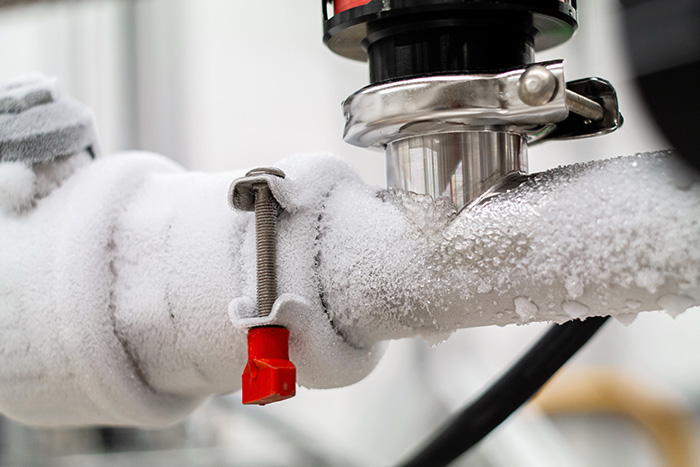Preventing Frozen Pipes in Cold Weather: Critical Advice
Preventing Frozen Pipes in Cold Weather: Critical Advice
Blog Article
Are you currently trying to locate information about How to Prevent Your Pipes From Freezing?

Winter can wreak havoc on your pipes, specifically by freezing pipelines. Right here's exactly how to prevent it from occurring and what to do if it does.
Introduction
As temperatures decline, the danger of frozen pipes rises, potentially resulting in pricey fixings and water damage. Understanding how to stop frozen pipelines is vital for property owners in cold environments.
Understanding Icy Pipes
What triggers pipes to ice up?
Pipes ice up when exposed to temperature levels below 32 ° F (0 ° C) for prolonged durations. As water inside the pipes ices up, it expands, putting pressure on the pipeline walls and potentially causing them to rupture.
Threats and damages
Frozen pipelines can bring about supply of water interruptions, property damage, and costly fixings. Burst pipes can flood homes and cause substantial architectural damages.
Indications of Frozen Piping
Identifying frozen pipes early can stop them from rupturing.
How to identify icy pipelines
Try to find lowered water flow from taps, unusual odors or noises from pipelines, and visible frost on revealed pipelines.
Prevention Tips
Shielding susceptible pipelines
Wrap pipes in insulation sleeves or make use of heat tape to secure them from freezing temperatures. Focus on pipelines in unheated or external areas of the home.
Heating methods
Maintain indoor areas properly heated up, particularly locations with pipes. Open up closet doors to allow warm air to circulate around pipes under sinks.
Safeguarding Outside Plumbing
Garden hose pipes and outside faucets
Disconnect and drain yard tubes before winter season. Install frost-proof spigots or cover exterior taps with protected caps.
What to Do If Your Pipes Freeze
Immediate actions to take
If you believe icy pipelines, keep faucets open up to relieve stress as the ice melts. Make use of a hairdryer or towels soaked in hot water to thaw pipelines gradually.
Long-Term Solutions
Structural modifications
Take into consideration rerouting pipelines away from outside wall surfaces or unheated locations. Include extra insulation to attic rooms, cellars, and crawl spaces.
Upgrading insulation
Buy high-quality insulation for pipelines, attics, and wall surfaces. Correct insulation helps preserve consistent temperatures and minimizes the threat of frozen pipes.
Final thought
Preventing frozen pipes needs aggressive measures and quick feedbacks. By understanding the causes, indications, and safety nets, house owners can shield their pipes throughout winter.
5 Ways to Prevent Frozen Pipes
Drain Outdoor Faucets and Disconnect Hoses
First, close the shut-off valve that controls the flow of water in the pipe to your outdoor faucet. Then, head outside to disconnect and drain your hose and open the outdoor faucet to allow the water to completely drain out of the line. Turn off the faucet when done. Finally, head back to the shut-off valve and drain the remaining water inside the pipe into a bucket or container. Additionally, if you have a home irrigation system, you should consider hiring an expert to clear the system of water each year.
Insulate Pipes
One of the best and most cost-effective methods for preventing frozen water pipes is to wrap your pipes with insulation. This is especially important for areas in your home that aren’t exposed to heat, such as an attic. We suggest using foam sleeves, which can typically be found at your local hardware store.
Keep Heat Running at 65
Your pipes are located inside your walls, and the temperature there is much colder than the rest of the house. To prevent your pipes from freezing, The Insurance Information Institute suggests that you keep your home heated to at least 65 degrees, even when traveling. You may want to invest in smart devices that can keep an eye on the temperature in your home while you’re away.
Leave Water Dripping
Moving water — even a small trickle — can prevent ice from forming inside your pipes. When freezing temps are imminent, start a drip of water from all faucets that serve exposed pipes. Leaving a few faucets running will also help relieve pressure inside the pipes and help prevent a rupture if the water inside freezes.
Open Cupboard Doors
Warm your kitchen and bathroom pipes by opening cupboards and vanities. You should also leave your interior doors ajar to help warm air circulate evenly throughout your home.

I ran across that content on How to prepare your home plumbing for winter weather while browsing the search engines. If you enjoyed our blog posting please be sure to share it. We recognize the value of your readership.
Book Now Report this page